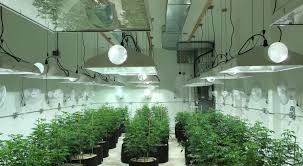
Integrating HVAC Systems in Cannabis Production for Maximum Yield
While the cannabis industry continues to expand and expand, so does the demand for specialized infrastructure to support the best health of plants and maximize yield. One crucial component that is part of the infrastructure HVAC (Heating and Ventilation as well as HVAC – Heating, Ventilation and Air Conditioning) device. Proper HVAC management is crucial for cannabis cultivation to maintain ideal conditions for cultivation and guaranteeing the highest quality of product. This is everything you should be aware of about cannabis HVAC.
1. Importance of HVAC in Cannabis Cultivation
Cannabis plants are highly sensitive to environmental conditions such as humidity, temperature, as well as air circulation. A well-designed HVAC system makes sure that these factors are kept in the right range for each stage of growth–seedling flowering, and vegetative. Proper HVAC management prevents problems such as mold, mildew and deficiencies in nutrient levels, which could seriously affect the health of plants and yield.
2. Key Components of Cannabis HVAC Systems
Heating: During colder months or in regions with fluctuating temperatures, maintaining a consistent warmth is crucial. Many growers use heaters and heating mats to ensure that temperatures remain within the desired range. The reliability of a heating unit can reduce stress on the plants, which could affect their growth and effectiveness.
Ventilation: Good circulation of air helps in removing excessive heat and humidity, while bringing in fresh air. This is achieved through the use of intake fans, exhaust fans and ductwork. Proper ventilation can help prevent the build-up of CO2, which can lead to poor plant growth. Also, it ensures that old air is replaced with oxygen-rich air, which is essential for photosynthesis.
Air Conditioning: During warmer climates or during summer, air conditioning is crucial to keep temperatures at a comfortable level. Air conditioners aid in keeping the environment cool, keeping heat at bay and ensuring that plants grow in a consistent and controlled conditions.
Deshumidification Cannabis flowers require specific humidity level to thrive. Insufficient humidity could cause mold and mildew, while too little can cause issues with the respiration of plants. Dehumidifiers can help regulate the humidity, making sure they are within the right levels for healthy growth.
3. Automation and Control
commercial grow room hvac design for cannabis cultivation typically have advanced automation and control options. These include programmable thermostats, humidity controllers, and environmental monitoring systems. Automation helps to maintain consistent conditions without any manual intervention, reducing the cost of labor and improving efficiency.
4. Energy Efficiency
Energy efficiency is an important consideration for cannabis HVAC equipment, specifically due to the energy-intensive demands for indoor cultivation. Implementing energy-efficient HVAC systems will help to lower operational costs and reduce any environmental impacts. Options such as variable-speed fans, energy recovery ventilators, and efficient lighting could contribute to overall energy savings.
5. Maintenance and Monitoring
Regular maintenance of HVAC systems is crucial for their long-term durability and efficiency. This involves cleaning the filters, checking for leaks, and ensuring that all parts are working properly. Monitoring systems can give real-time information regarding temperature, humidity and air quality, allowing for rapid adjustments to keep conditions optimal.
In the end the conclusion, a well-designed and maintained HVAC system is crucial to successful cannabis cultivation. Focusing on heating, air conditioning, ventilation and dehumidification, and incorporating automated practices and energy efficient methods, growers can create a perfect conditions for their plants to thrive and yield high-quality results.




